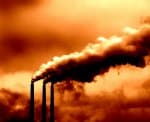Renewable energy’s growth in recent years is impressive, but the rumoured death of coal is greatly exaggerated – and Australia continues to be a Typhoid Mary spreading its disease.
The BP Statistical Review of World Energy June 2012 states fossil fuel still makes up 87% of energy consumption and while oil has lost market share for 12 consecutive years, coal is still the fastest growing fossil fuel.
In 2001, 2381.1 million tonnes oil equivalent (MTOE) of the fossil fuel was consumed globally. In 2011, that had jumped to 3724.3 million tonnes oil equivalent. The change between 2011 and 2010 was a 6% increase; building on already massive numbers.
The Asia Pacific region accounted for 85% of global production growth and accounted for all of the net growth in terms of consumption.
In 2001, Australia produced 180.2 million tonnes oil equivalent of coal. By 2011, that had jumped to 230.8 MTOE. While experiencing a 2.2% drop between 2010 and 2011, this was due to – perhaps ironically – severe weather related events.
The consumption picture for Australia also looks grim and grimy. In 2010, we consumed 48.2 million tonnes oil equivalent and while by 2011 that had only grown to 49.8 MTOE, there was a whopping increase of 13.6% between 2010 and 2011 as we shook off the effects of the global financial crisis.
There is a huge gap between Australia’s consumption and production. All of that coal isn’t sitting in massive warehouses somewhere ready for when we need it in the future. Much of it is being shipped all over the world; spreading its ills like a disease-carrying globe-trotting tourist.
While we’re happy to point the finger at nations with even worse emissions profiles than our own; it’s these nations that we often outsource production of goods to – and then ship them back; further adding to the emissions burden.
The picture would look much worse without renewable energy, but it’s becoming increasingly obvious that globally – and even on a local scale – the uptake of clean energy and implementation of energy efficiency strategies isn’t happening fast enough.
The International Energy Agency’s (IEA) Energy Technology Perspectives 2012 states nine out of ten technologies that hold potential for energy and CO2 emissions savings are failing to meet the deployment objectives needed to achieve the necessary transition to a low-carbon future. The IEA says to halve carbon dioxide emissions by 2050, coal demand in a scenario where average global temperatures did not exceed a 2C increase would need to fall by 45% compared to 2009 levels.
Achieving this is not impossible says the IEA, but decisive policy action is needed now.
The BP Statistical Review of World Energy June 2012 can be viewed in full here (PDF).












































